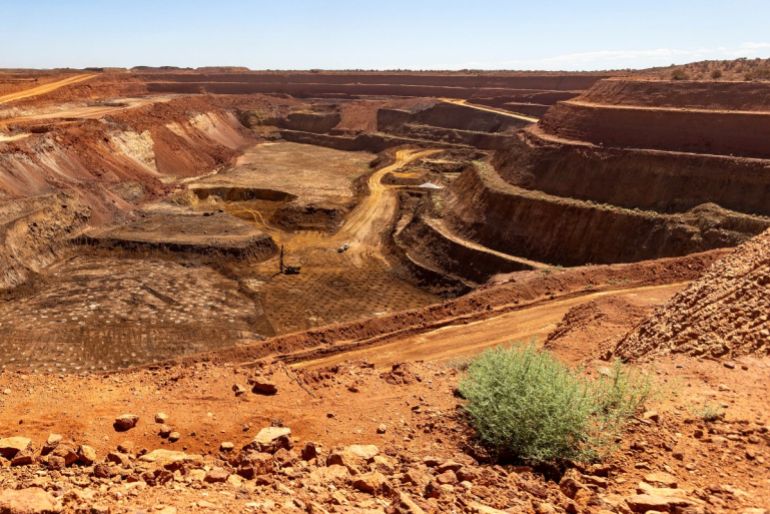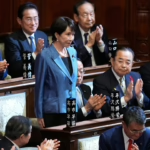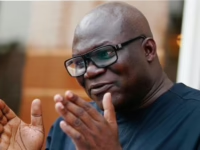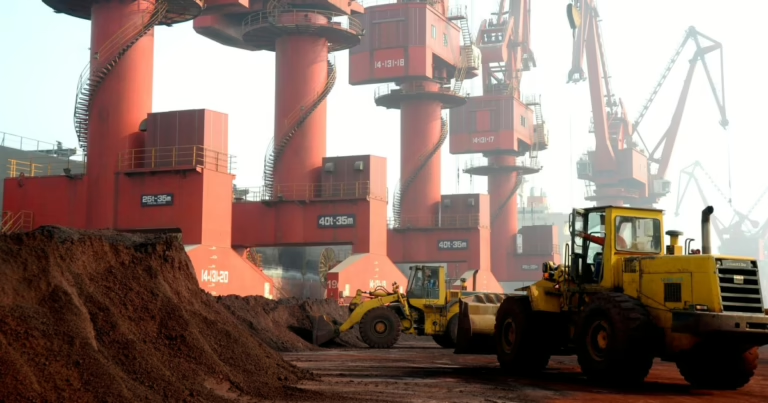As China signals potential restrictions on rare earth exports, nations like the United States and others reliant on these vital minerals are urgently working to diversify their supply networks and build domestic capabilities.
Despite strong political commitment and substantial financial investments, experts suggest that dismantling China’s near-monopoly on rare earth elements will likely require a decade or more to achieve.
Achieving independence from Chinese rare earths demands establishing intricate supply chains encompassing mining, refining, metallization, and magnet production.
This transition faces significant hurdles, including steep capital requirements, shortages in specialized knowledge, and environmental concerns.
Moreover, the challenge is compounded by rapidly increasing global demand for these minerals, which are essential components in technologies ranging from electric vehicles and smartphones to advanced military hardware.
Ryan Castilloux, founder and managing director of Adamas Intelligence, estimates that with consistent policy support and investment, the US and its partners will need 10 to 15 years to develop a robust supply chain capable of meeting escalating needs.
“Currently, the US imports approximately 10,000 tonnes of rare earth magnets annually from China, while Europe’s imports exceed 25,000 tonnes,” Castilloux explained. “Demand in both regions is accelerating and is expected to multiply several times over the next decade.”
The Trump administration has actively pursued measures to secure rare earth supplies, including stockpiling resources, expediting domestic mining projects, and acquiring stakes in Canadian mining firms.
International partnerships have also been a focus. Recently, the US facilitated an agreement between Missouri-based US Strategic Metals and Pakistan’s Frontier Works Organization to export minerals from South Asia.
In addition, Washington struck a deal with Ukraine to share profits from future commodity sales, further diversifying sources.
Most recently, President Trump and Australian Prime Minister Anthony Albanese formalized a $8.5 billion investment pact aimed at developing rare earth projects in Australia, allowing both governments to hold equity stakes to secure critical mineral supplies such as terbium, yttrium, holmium, and erbium.
Although Australia holds substantial critical mineral reserves, it is unlikely to supplant China’s dominance alone, as its deposits are roughly one-seventh the size of China’s, according to the US Geological Survey.
Following the announcement, shares in rare earth companies surged, with Oklahoma-based USA Rare Earth’s stock rising about 14 percent.
Similar efforts to enhance supply chain resilience are underway across Europe and Asia.
The European Union’s Critical Raw Materials Act, enacted last year, sets ambitious goals to reduce reliance on imports, aiming for 40 percent of its annual mineral consumption to be processed domestically by 2030.
In recent months, Europe inaugurated its first rare earth magnet manufacturing facility in Narva, Estonia, alongside a new production line at Solvay’s processing plant in La Rochelle, France.
Meanwhile, major Asian economies such as India and Japan are investing in domestic resource development and overseas projects to lessen dependence on China.
Ross Chandler, a postdoctoral researcher at Australian National University specializing in critical minerals, describes the journey to reduce reliance on China as a “multi-decade endeavor,” emphasizing that regulatory approvals, financing, and technical scaling cannot be rushed.
“China leads in midstream separation, refining, and metal production, while its mining dominance is somewhat less pronounced,” Chandler noted. “Developing comparable expertise and capacity elsewhere is a complex, time-intensive, and capital-heavy process.”
For the US and its allies, the bottleneck lies more in processing capabilities than in raw mineral reserves.
Although these countries collectively hold about 35-40 percent of global rare earth reserves, they only possess 10-15 percent of the refining and processing infrastructure, according to Rahman Daiyan, senior lecturer at the University of New South Wales School of Minerals and Energy Resources Engineering.
“If all planned projects, recycling efforts, and stockpiling strategies succeed by 2030, Western nations could meet the majority of their demand,” Daiyan said. “While fully decoupling from China is complex and influenced by cost and market forces, the West can enhance its position by sharing resources, capacity, and leveraging green premiums.”

China’s supremacy in rare earths stems from decades of state-driven investments, often undertaken without the environmental and economic constraints that typically challenge similar projects in Western countries.
Currently, China controls about 70 percent of global mining and 90 percent of processing activities, according to the Center for Strategic and International Studies in Washington.
“China has methodically built an end-to-end supply chain by investing in mines, refining processes, and downstream manufacturing,” explained Hayley Channer, a rare earths specialist at the United States Studies Centre, University of Sydney.
This entrenched dominance has gained renewed attention following China’s recent announcement to impose export controls requiring foreign companies to obtain licenses for exporting rare earth magnets and certain semiconductor materials containing Chinese-sourced minerals or technology, effective December 1.
Widely interpreted as a strategic move to strengthen China’s bargaining position ahead of anticipated high-level trade discussions, the new regulations have sparked concern among governments and industries about potential disruptions to global supply chains.
Castilloux of Adamas Intelligence warned that these measures could exacerbate existing supply chain challenges, turning minor inconveniences into major obstacles.
Qarrem Kassim, an analyst at Malaysia’s Institute of Strategic and International Studies, predicts China’s rare earth dominance will persist for at least another decade.
“The primary challenge is not financial but the time and consistent political resolve required,” Kassim said.
He also noted that even if the US and its allies lessen their reliance on Chinese rare earths, geopolitical tensions with Beijing are unlikely to ease, potentially shifting competition to new sectors and supply chains.






















